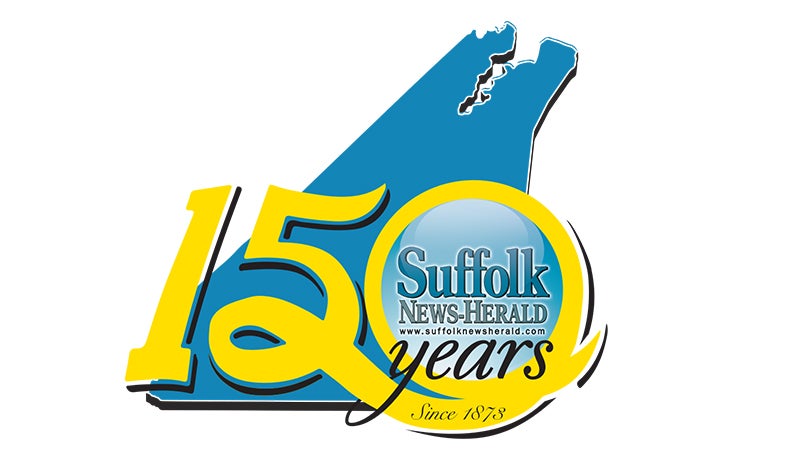Column – Emerging from the darkness
Published 1:42 pm Tuesday, July 4, 2023
|
Getting your Trinity Audio player ready...
|
In March of 1970, the sun went out, or so it seemed. On March 7, about 5,000 amateur astronomers and some professional skywatchers visited the area to view the Eastern United States’ last total solar eclipse of the century. The total eclipse lasted about three minutes.
“The racing shadow of the moon penciled an 85-mile-wide path up the populous eastern U.S. seaboard from Florida to Maryland like a gathering black tropical storm to the oohs and aahs of once-in-a-lifetime watchers. Chickens roosted, frogs croaked as at eventide, squirrels went to sleep, horses hung their heads, and even buzzards circling a Georgia swamp swooped down to roost on bare cypress trees. In Washington, D.C., about 100 young men and women gathered in concentric circles, holding hands and humming Eastern chants. They snakedanced their way through a crowd of several thousand eclipse-gazers gathered at the base of the Washington Monument, and their long-haired leader led them through Indian prayers.”
This was the first total eclipse of comparable magnitude and duration since 1878.
In April, the Bennett’s Creek Rescue Squad began operation. It served the northeastern section of Nansemond County with two rescue vehicles and 45 trained men. During the day, an emergency vehicle was stationed at Bennett’s Creek Farm Market. Nights and weekends, the vehicle was stationed with the other at the squad’s headquarters building, near the entrance at the Frederick Campus at Tidewater Community College.
On May 4, 1970, National Guardsmen opened fire, killing four Kent State University students during a campus antiwar demonstration. Ten additional students were wounded, three critically, in the three-second volley from the rifles of about 20 guardsmen who were retreating under a barrage of rocks thrown by demonstrators. Allison Krause, 19, Sandra Lee Scheuer, 20, Jeffery Miller, 19, and William K. Schroeder, 19, died in the gunfire. Gov. James A. Rhodes, who sent guardsmen onto the campus during a weekend of rioting triggered by President Nixon’s Thursday night broadcast announcing U.S. troops had entered Cambodia, called it “the saddest day I have known as governor.”
Businesses opened up all over Suffolk. Russell & Holmes, one of the largest shoe stores in the nation, opened its doors July 30, 1970. The new store was at 139 N. Main St. Construction on a Safeway Inc. Supermarket, a national grocery chain, began in early 1971 on almost two acres of property at the southwest corner of North Main Street and Constance Road.
Starting June 30, 1971, Virginians began living under a new constitution, one that committed the state to cleaning up the environment and assuring quality education for everyone. A.E. Dick Howard, assistant dean of the University of Virginia law school and executive director of the constitutional commission, said the charter marks “a return to self-government … the first time in 100 years the people have had a say in their state constitution.” He said Thomas Jefferson believed Virginians should rewrite their constitution every generation to meet contemporary needs.
Among other things, the new constitution: provided for annual sessions of the General Assembly, continued the prohibition against a governor succeeding himself, committed the state to clean air, pure water and a quality environment, obligated the state to assure free public schools and acknowledged the goal of “high quality” education for all, forbade governmental discrimination on grounds of religion, race, color, national origin or sex, provided freer access to the voting franchise, including shorter residency requirements, while retaining the minimum voting age at 21.
The new constitution removed the prohibition against lotteries. Among the provisions not carried over from the old constitution were those relative to the poll tax, which the U.S. Supreme Court declared illegal, and such anachronisms as the regulation of canal companies and dueling.
Starting with the Sept. 14, 1971, Democratic primary, voters were required to cast their ballots in the ward or precinct where they actually reside. It had been a common practice that voters continued going to their old voting place even though they had moved to a different part of the city.
In December 1971, scientists at the Stanford Research Institute announced they had started to build a computer that could converse with its programmers, answering questions verbally. Dr. Bertram Raphel, manager of the artificial intelligence program, said the computer would be able to speak its answers as long as its questioners limit themselves to a 1,000-word vocabulary, programmed into the device, and as long as they speak clearly in “pure American male English.” The computer might have trouble with slurred words, Raphael said, and women have a different way of talking. There is a big advantage of a computer that can be spoken to, he said, because “as it is now, computers can only be used by people who type or can punch cards.”
Jen Jaqua is the creative director for the Suffolk News-Herald. She can be contacted at jen.jaqua@suffolknewsherald.com.



